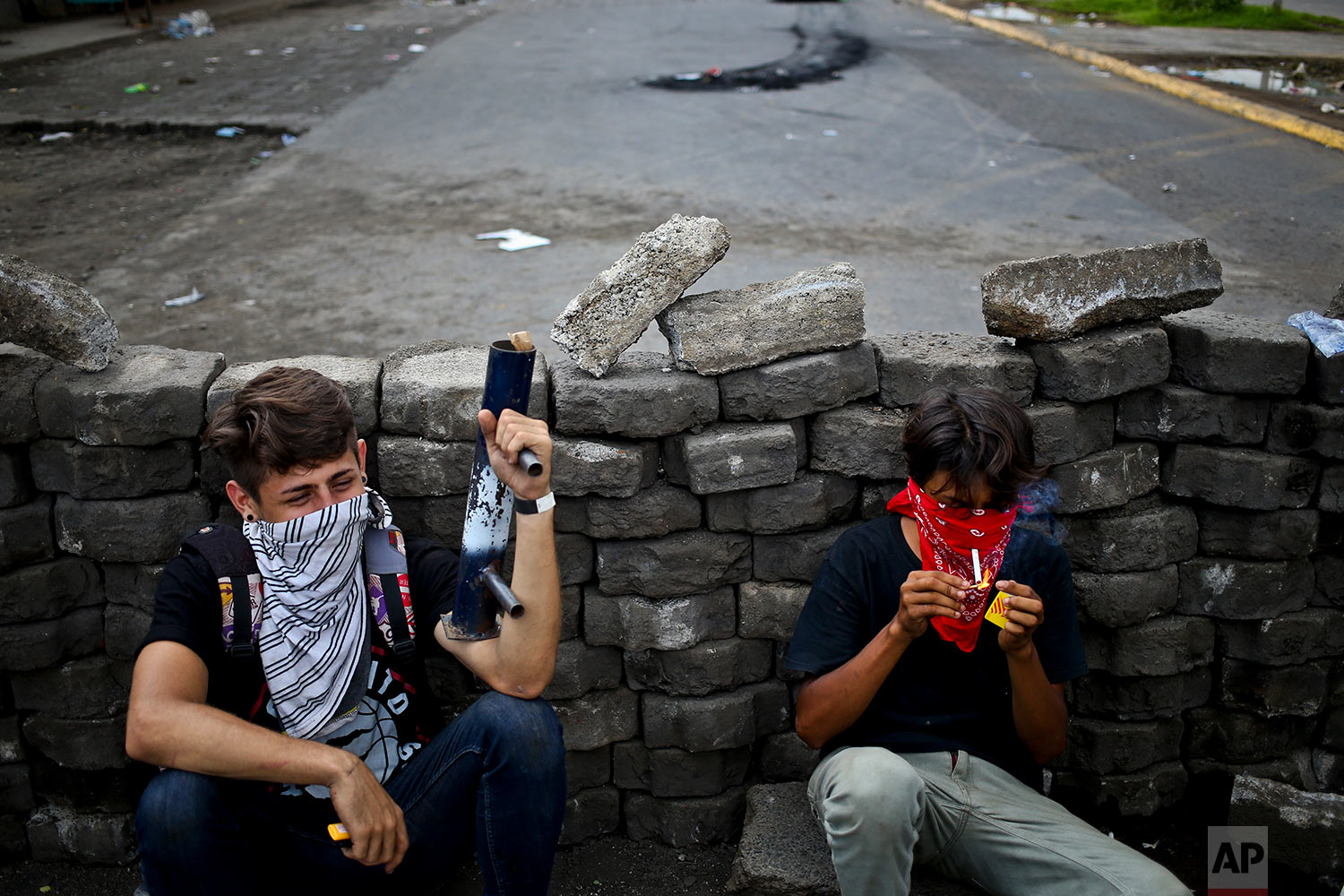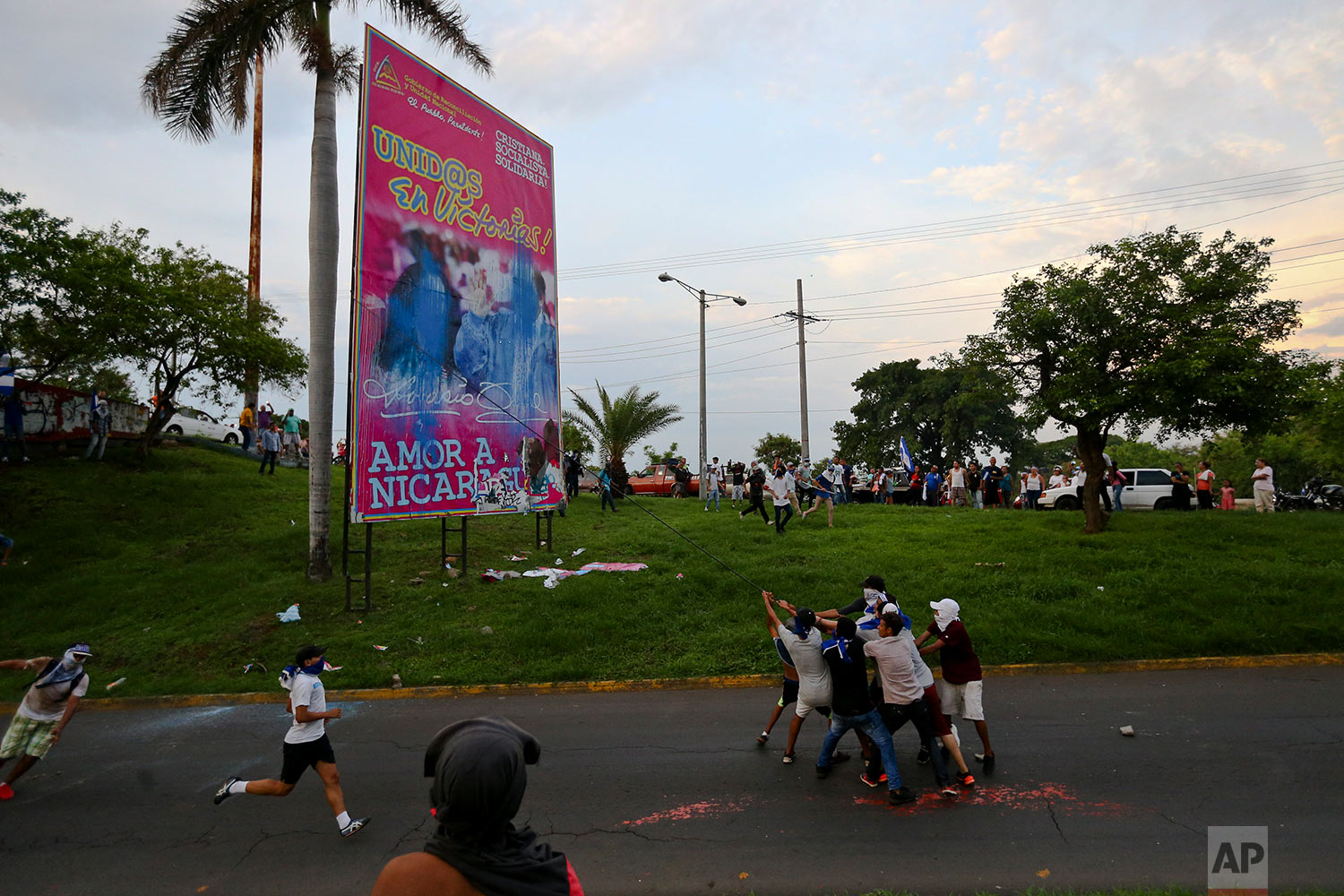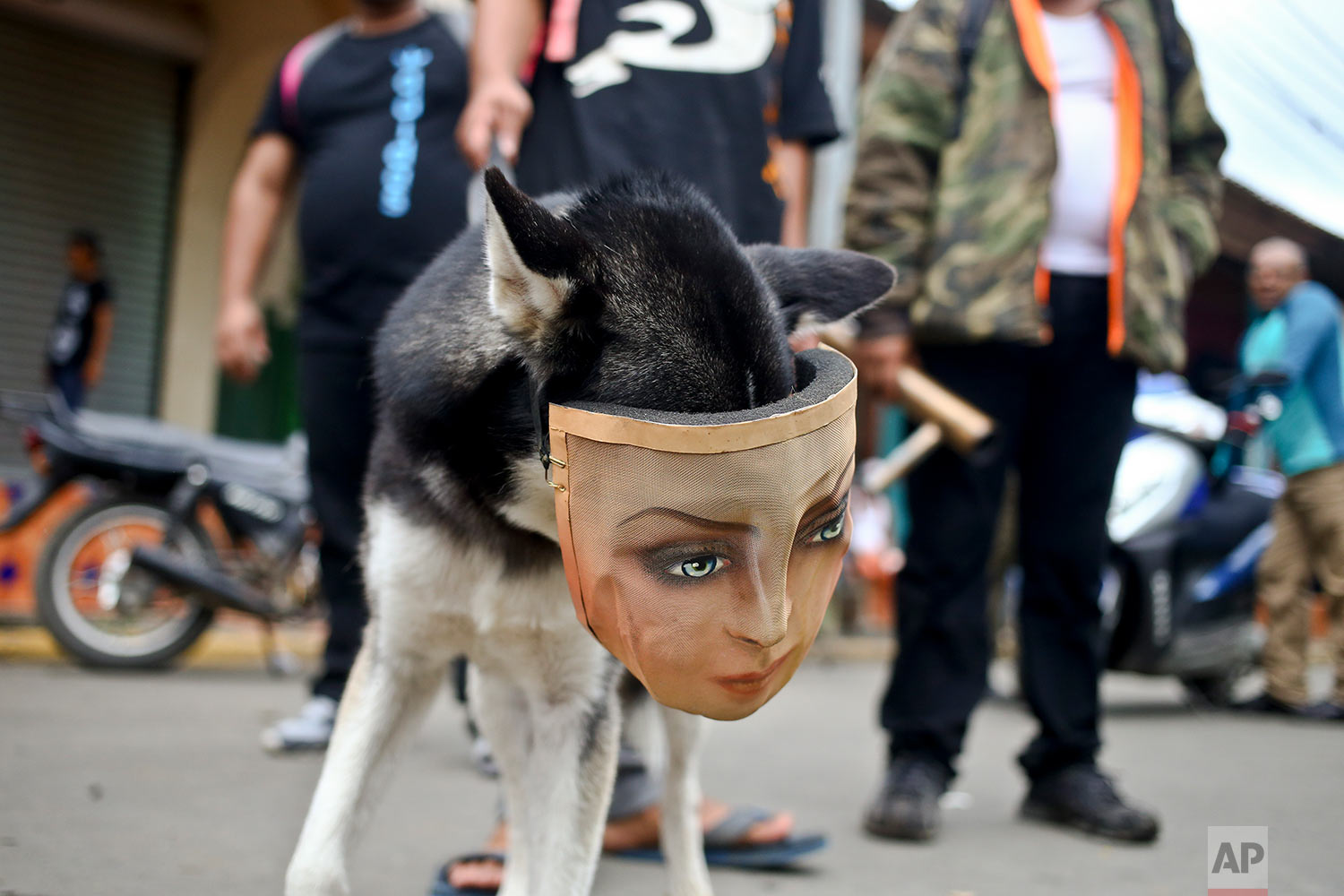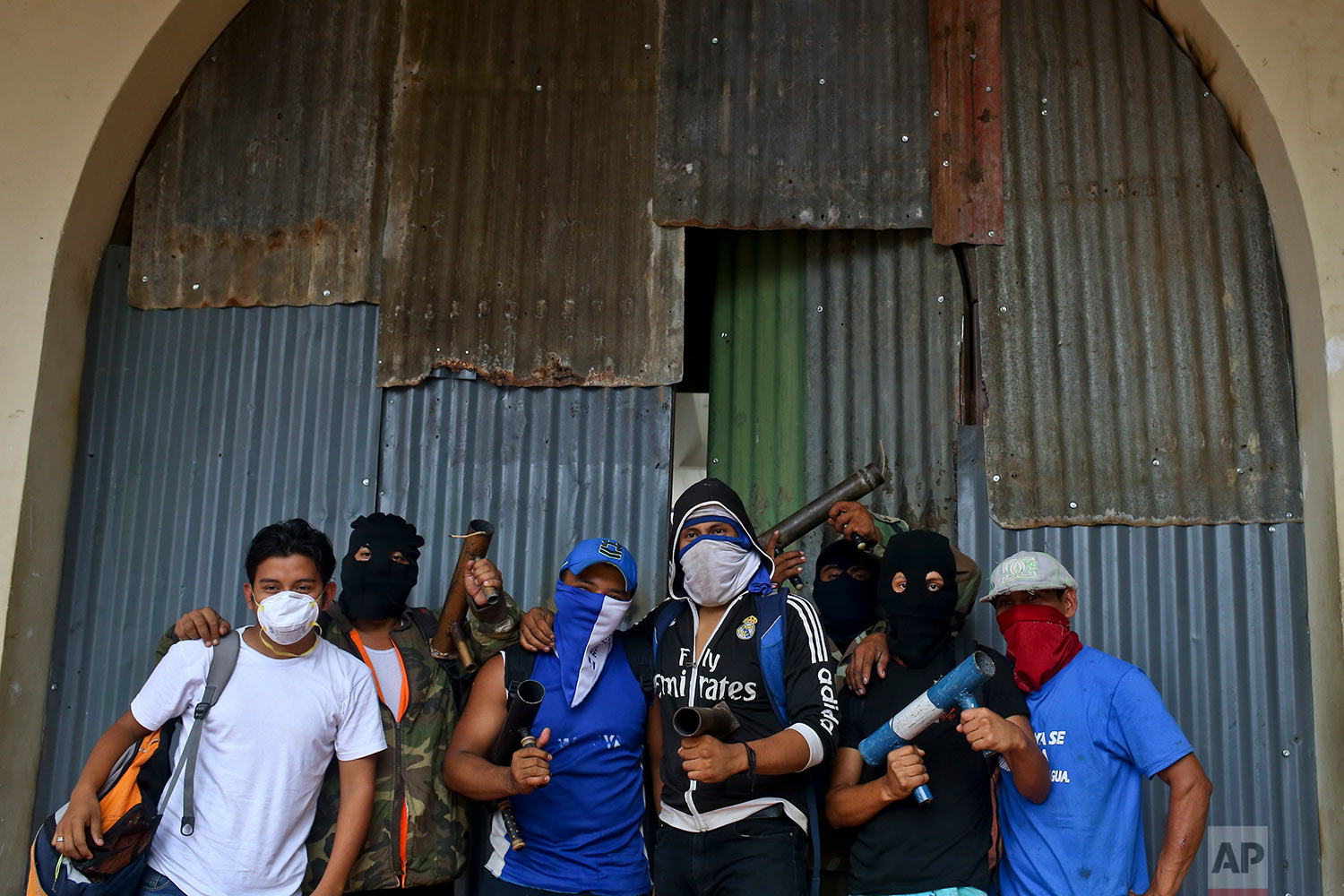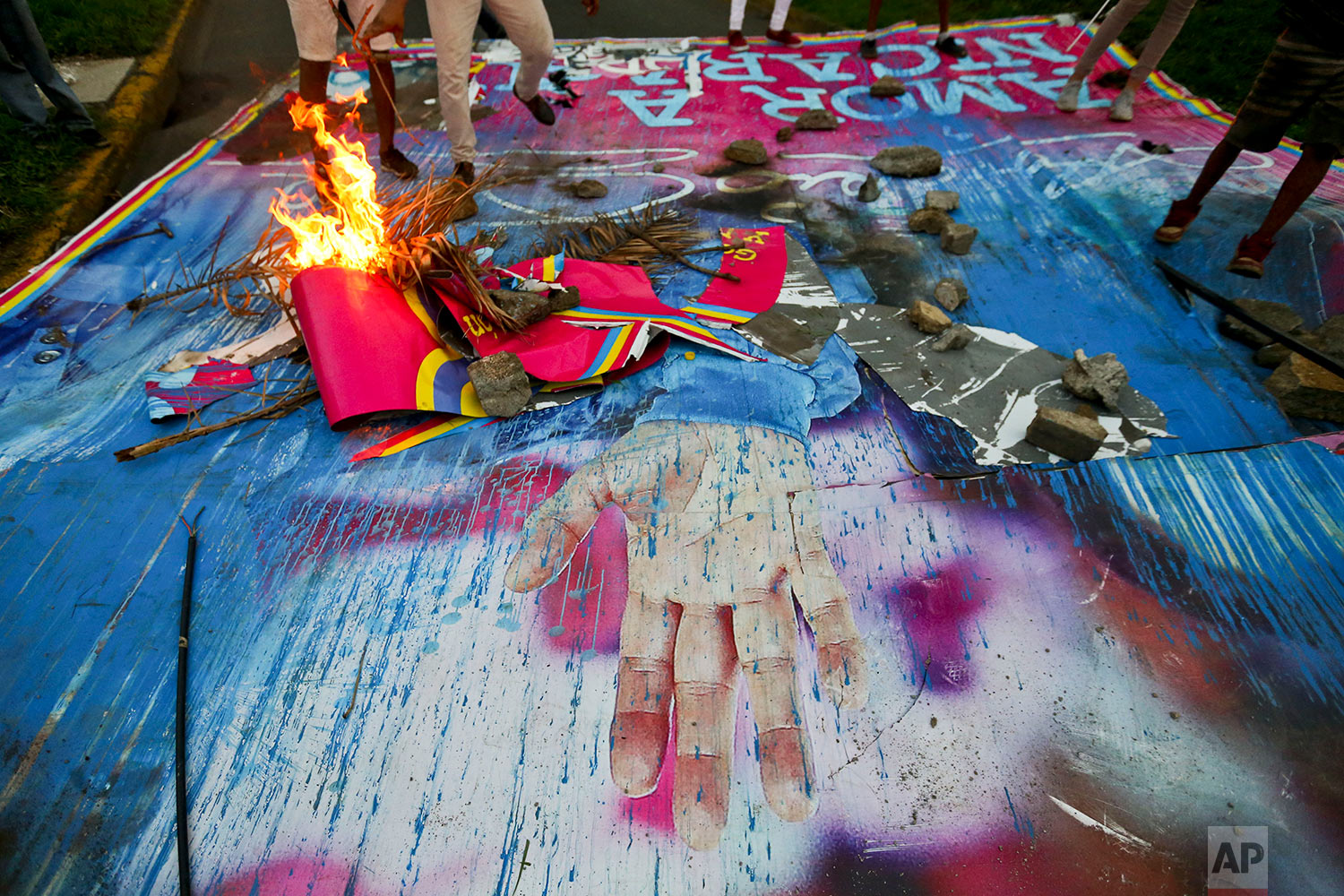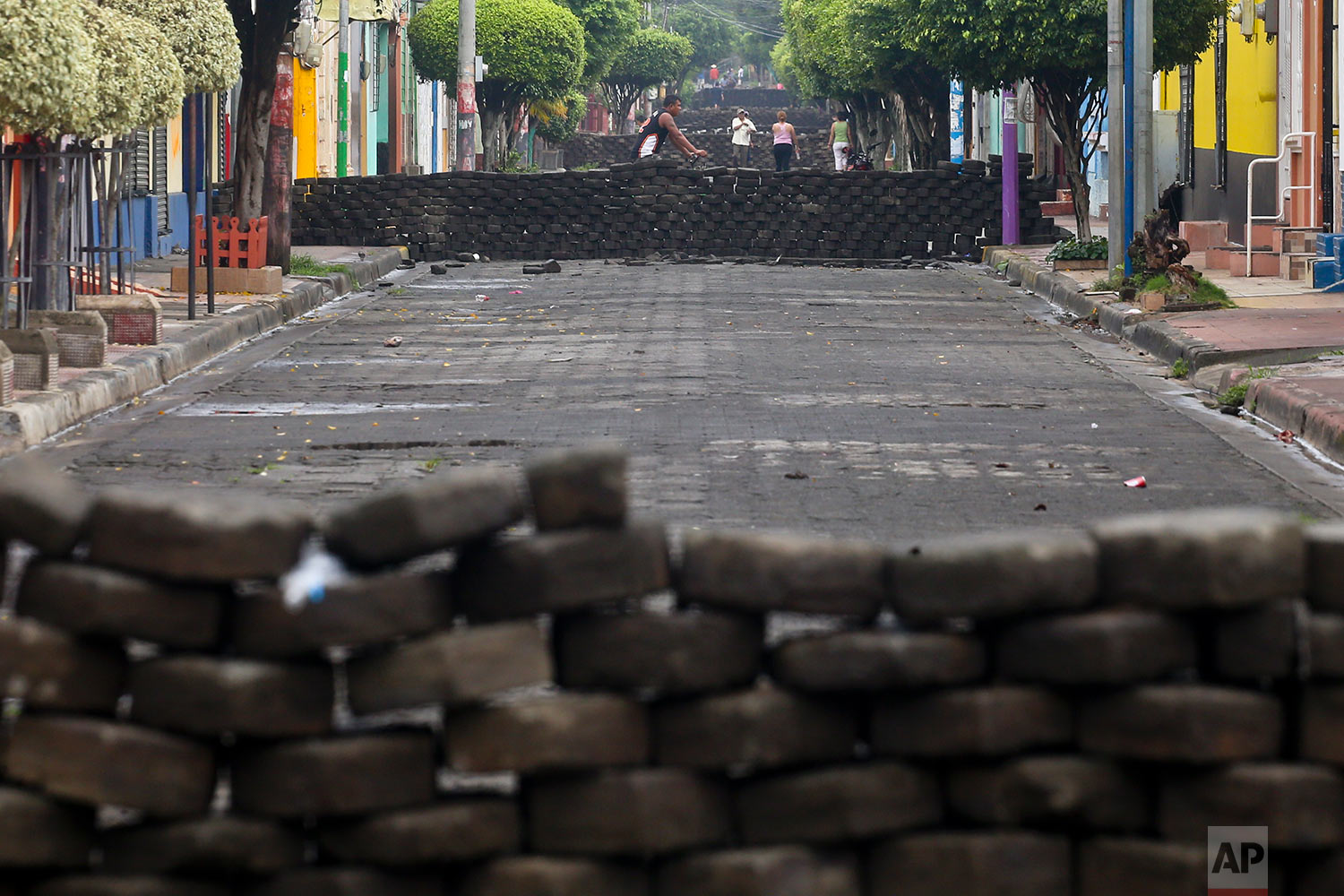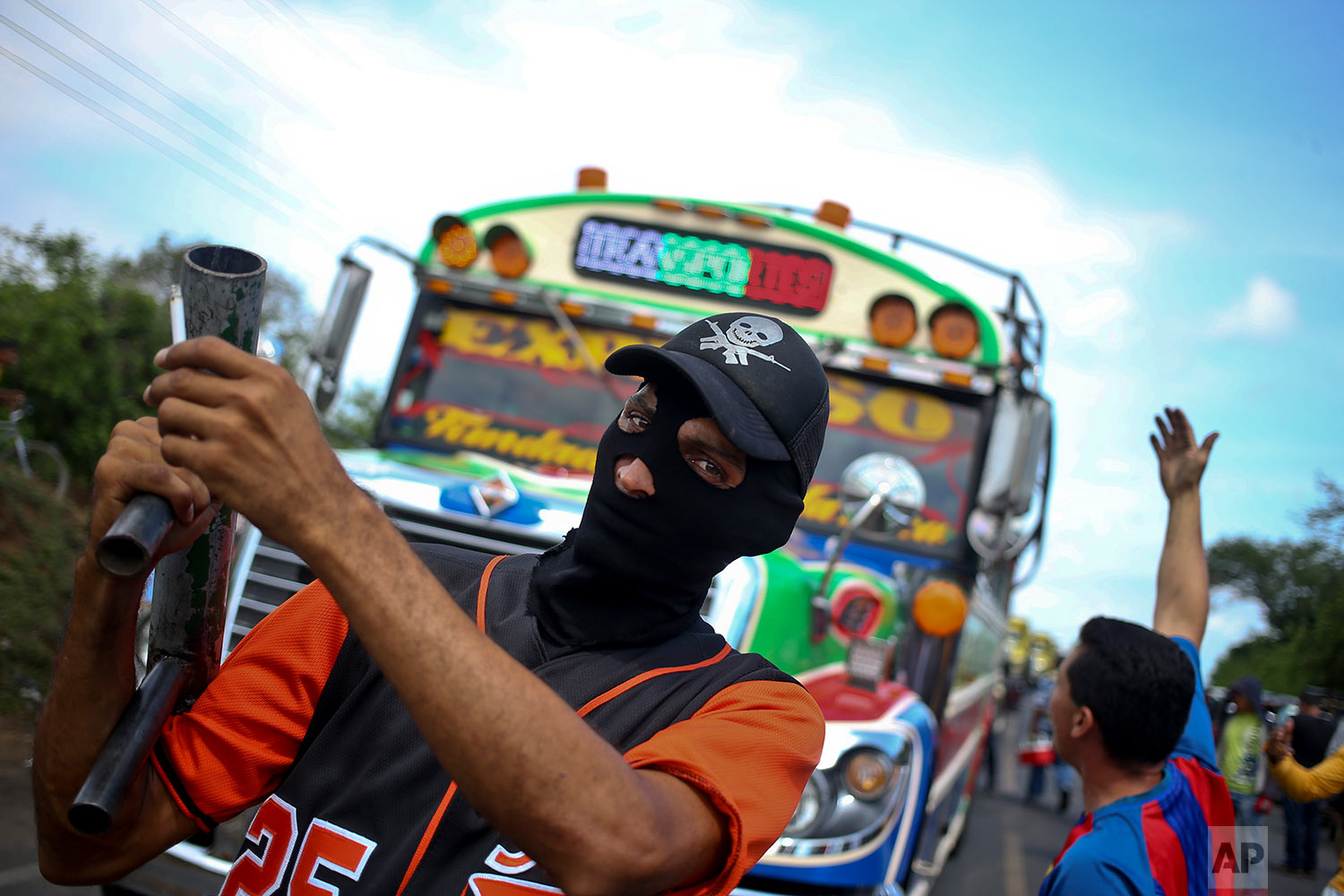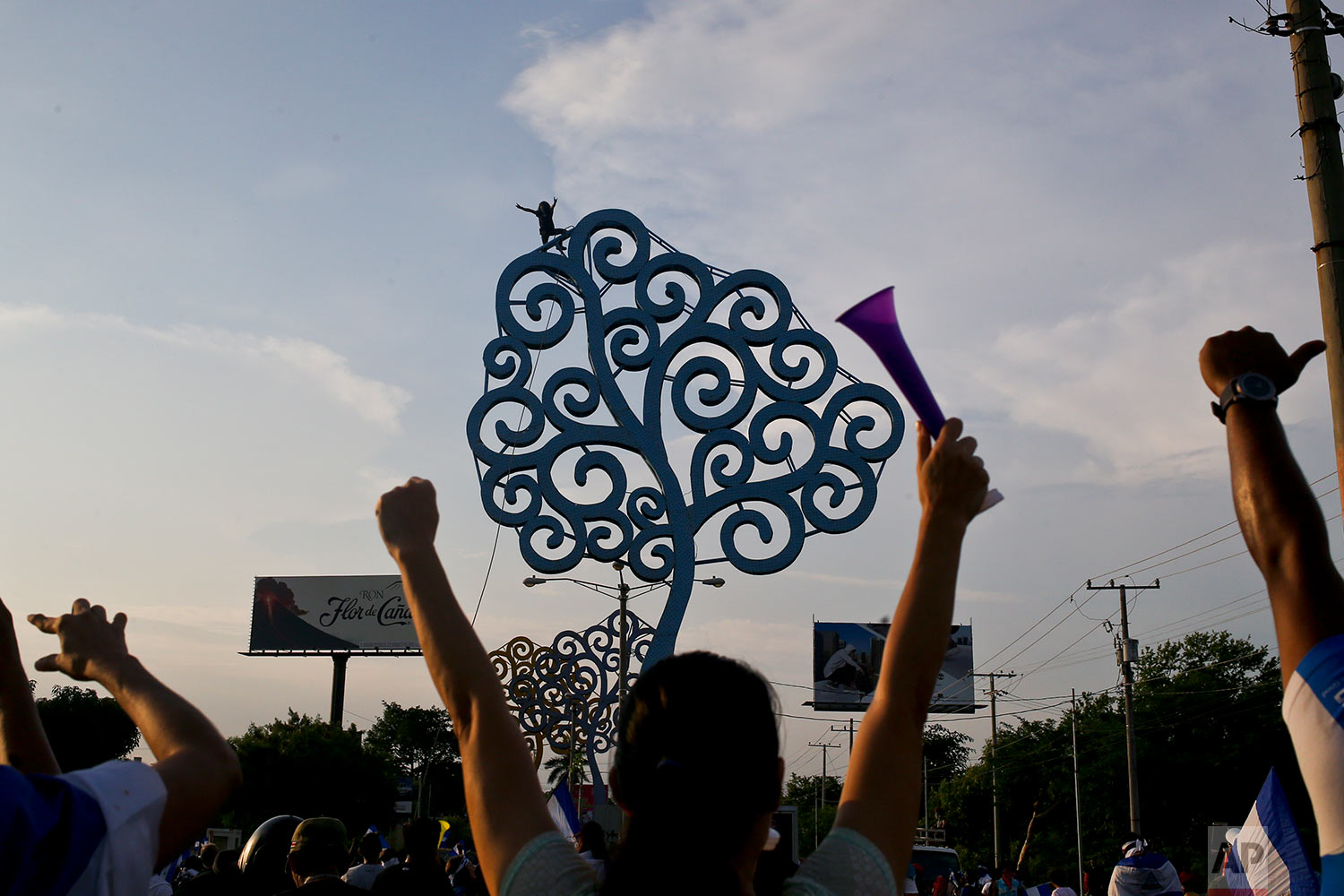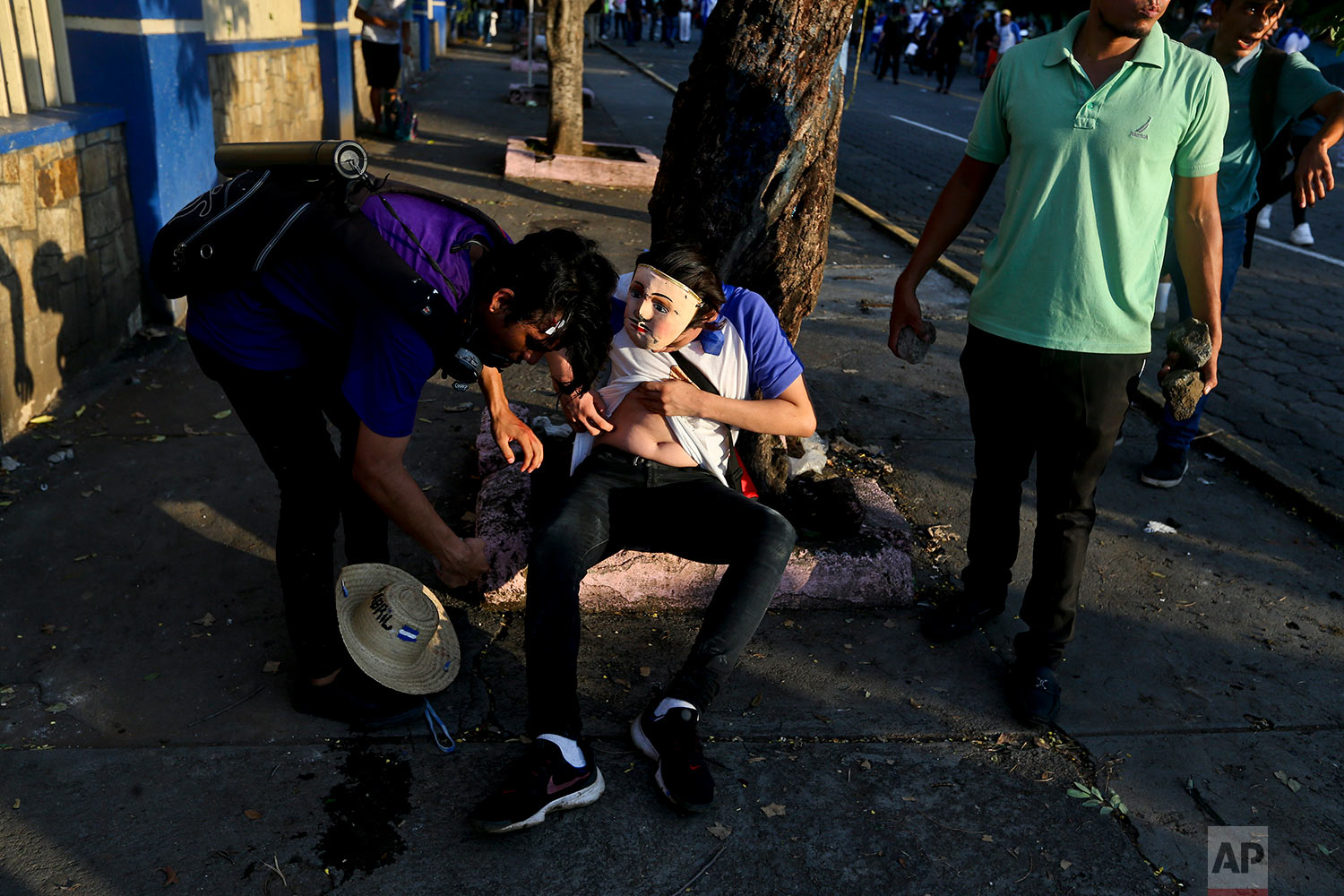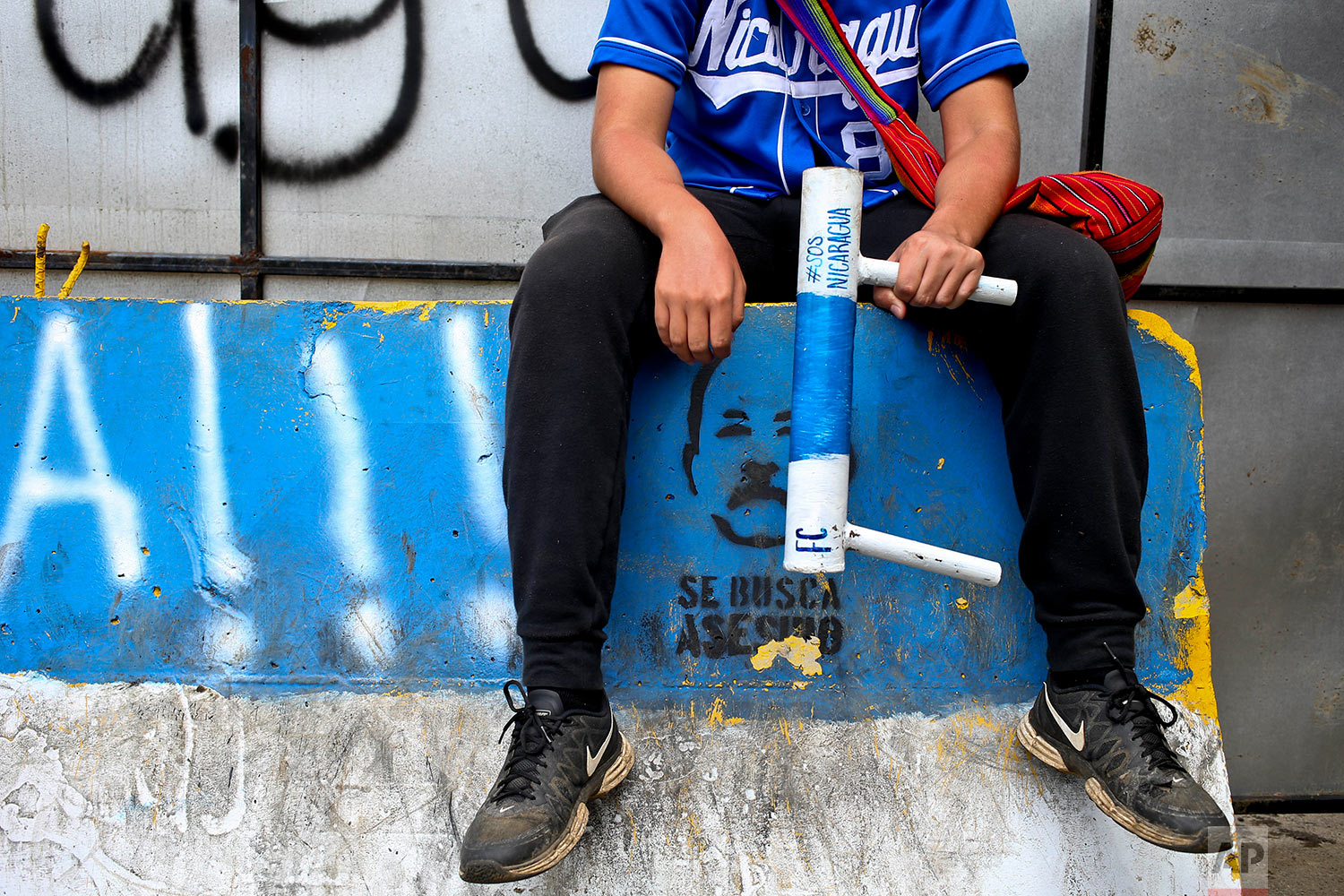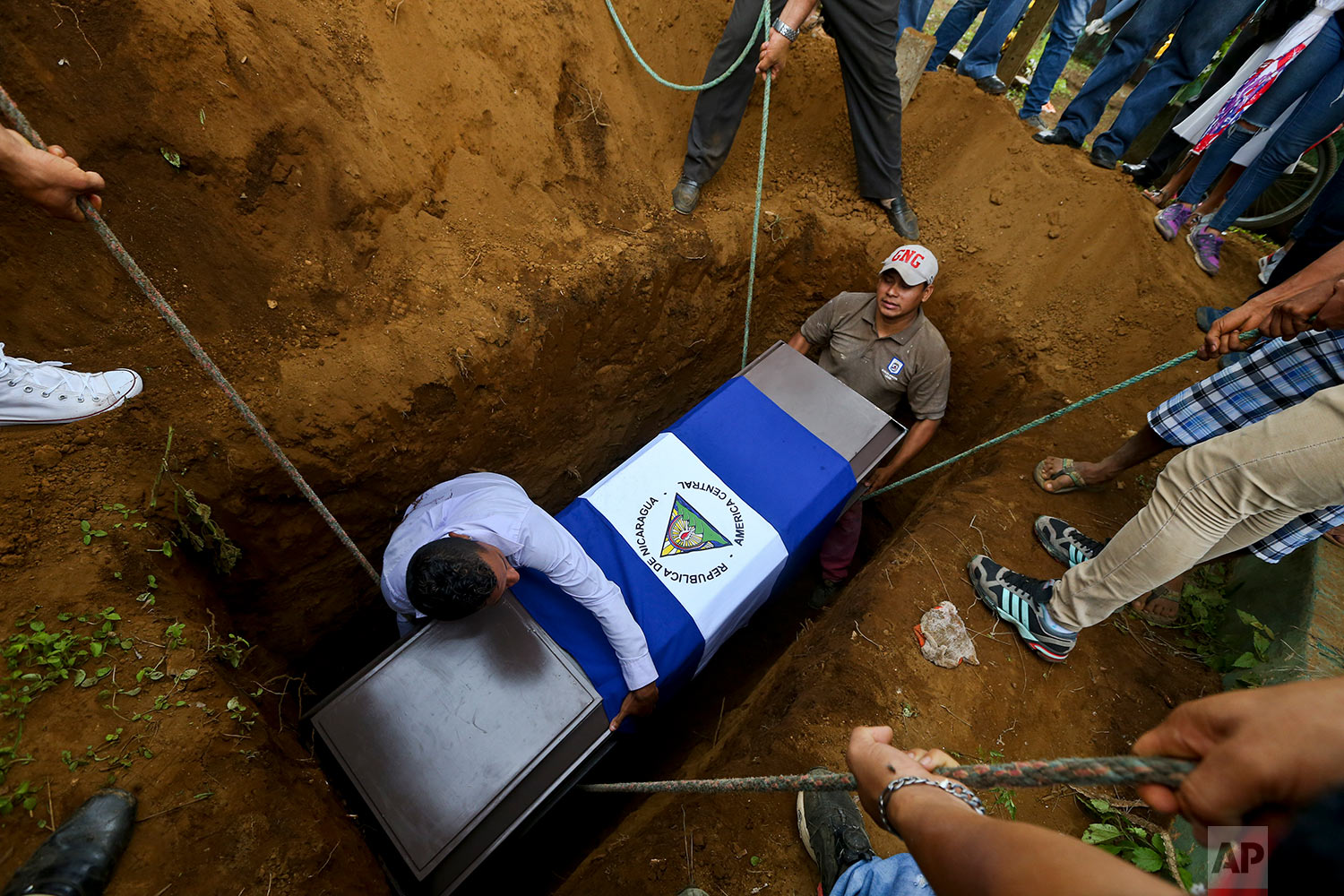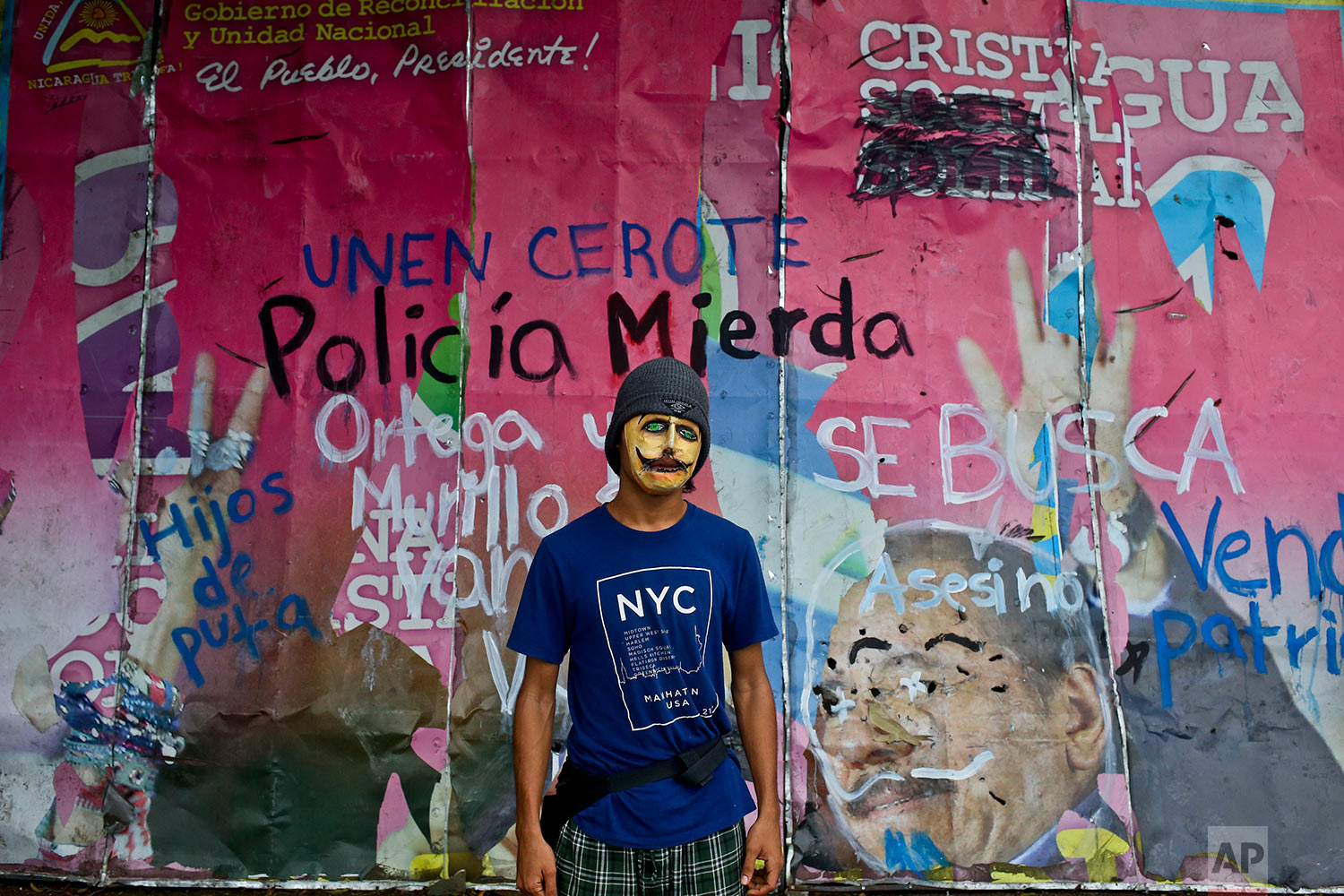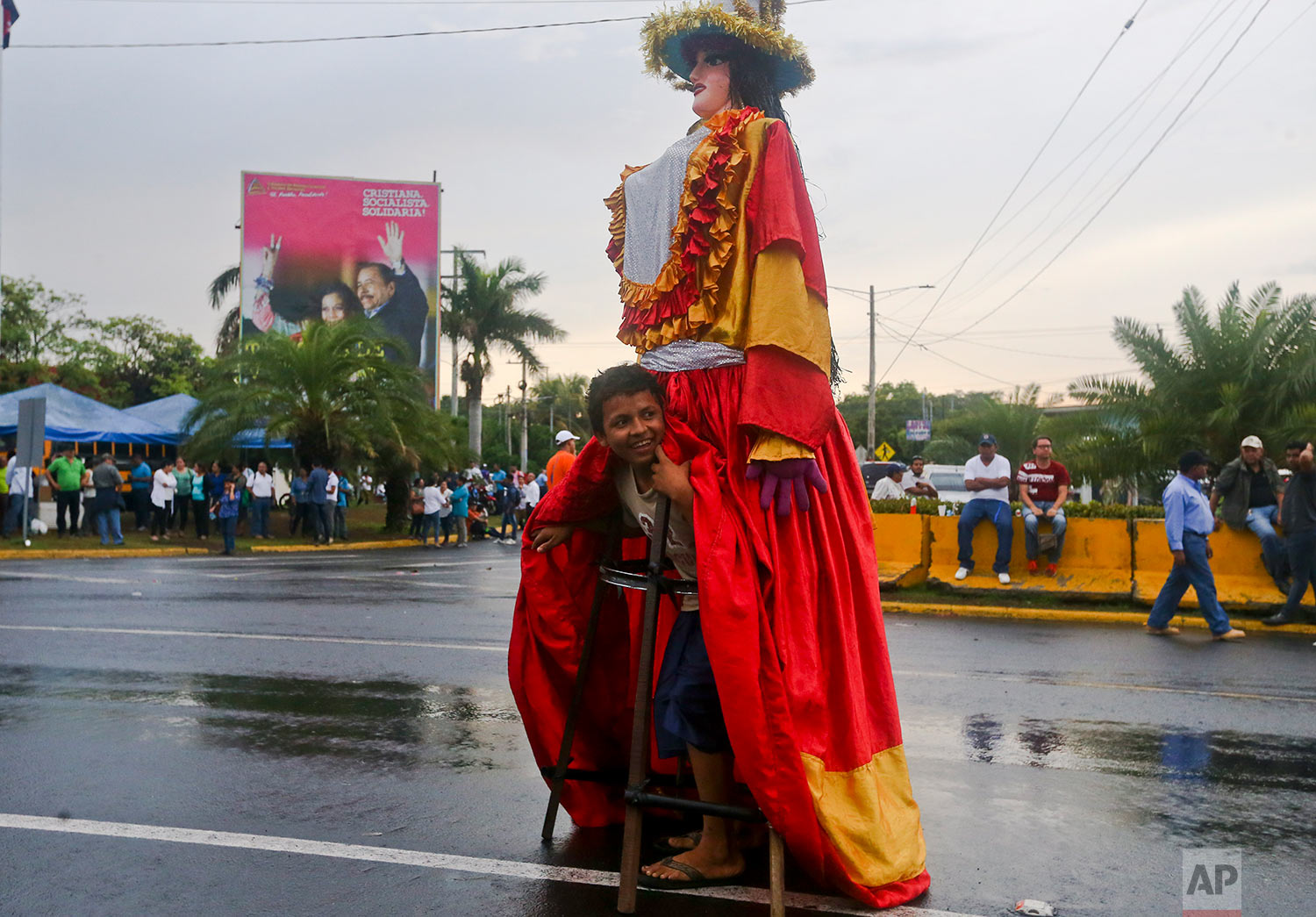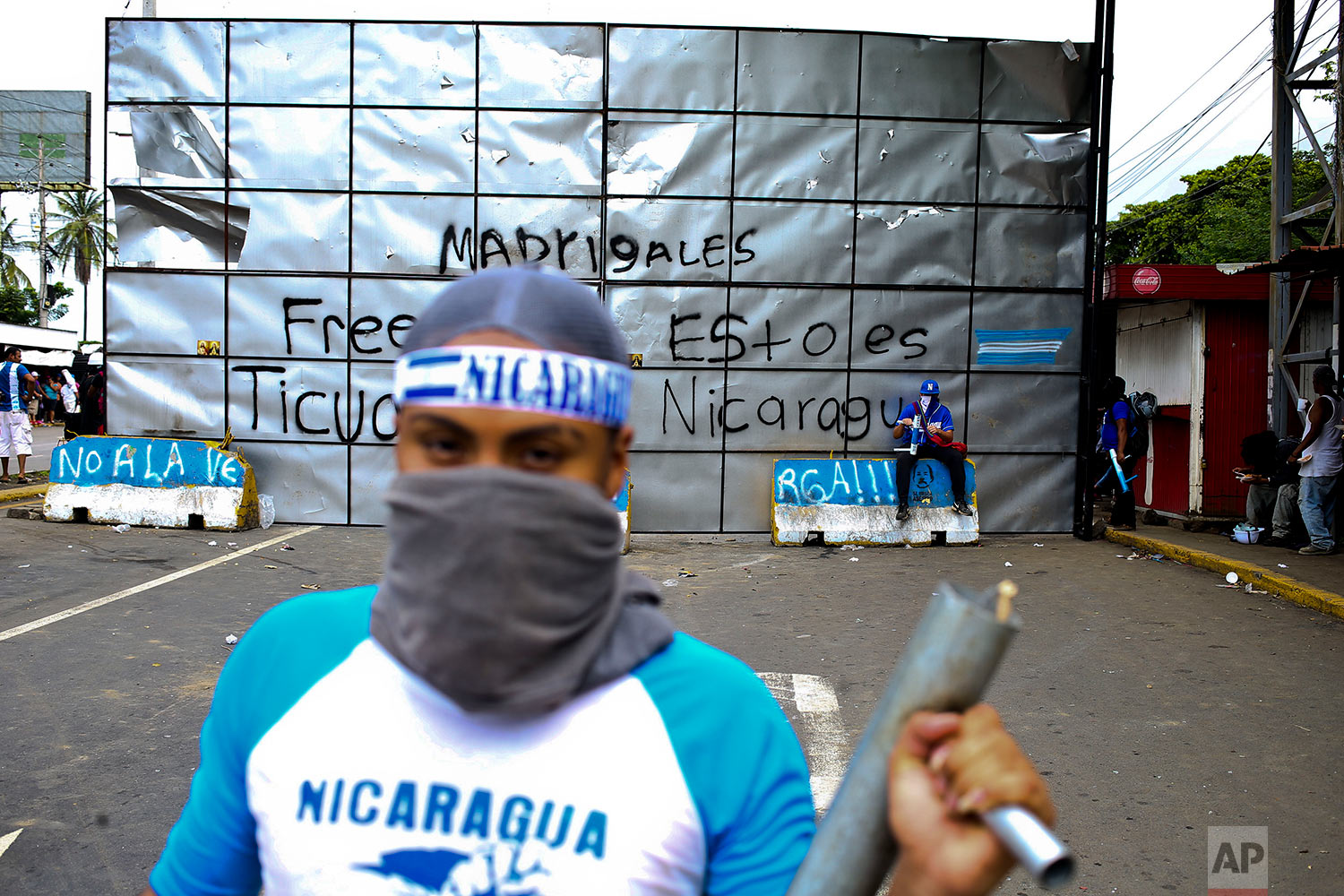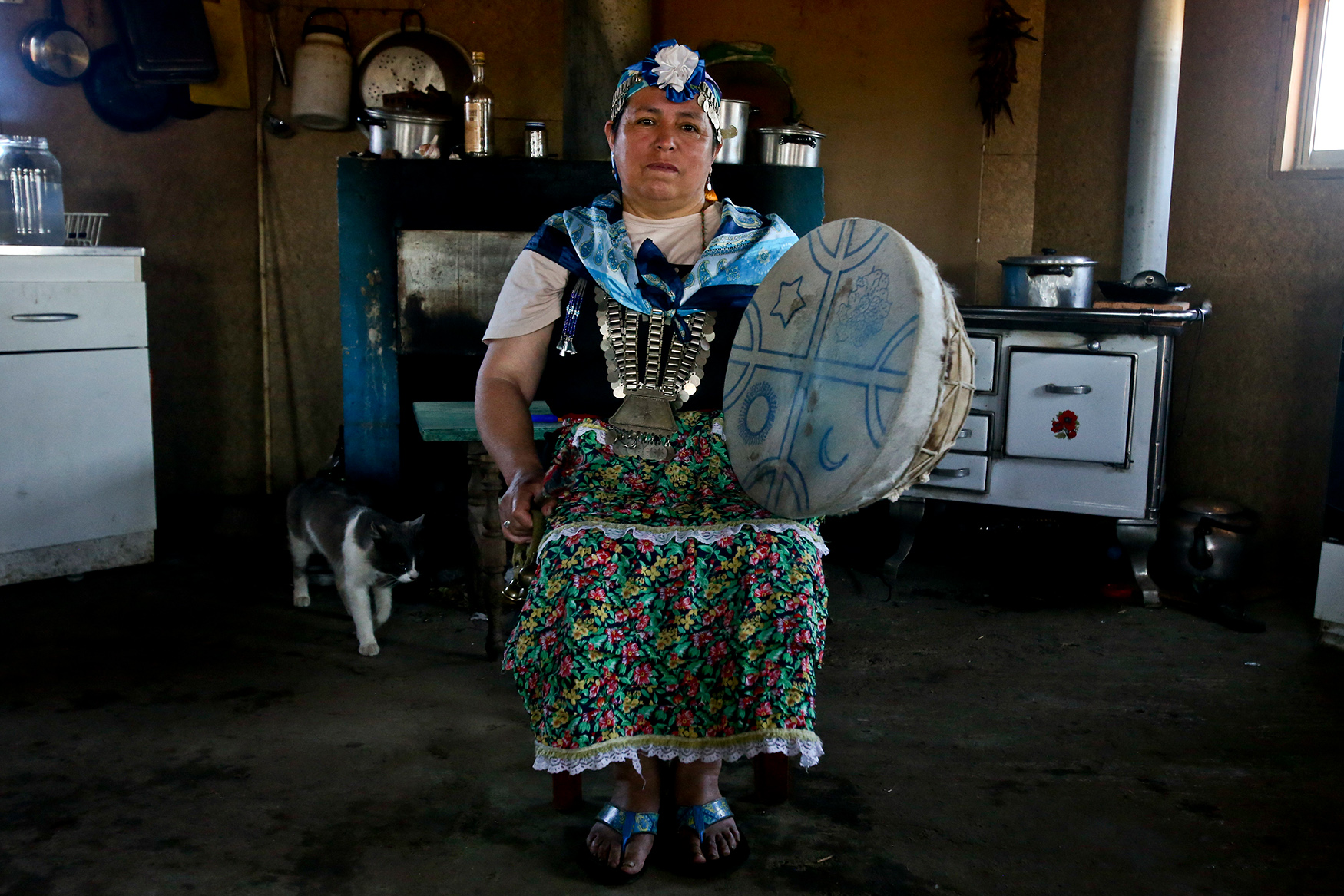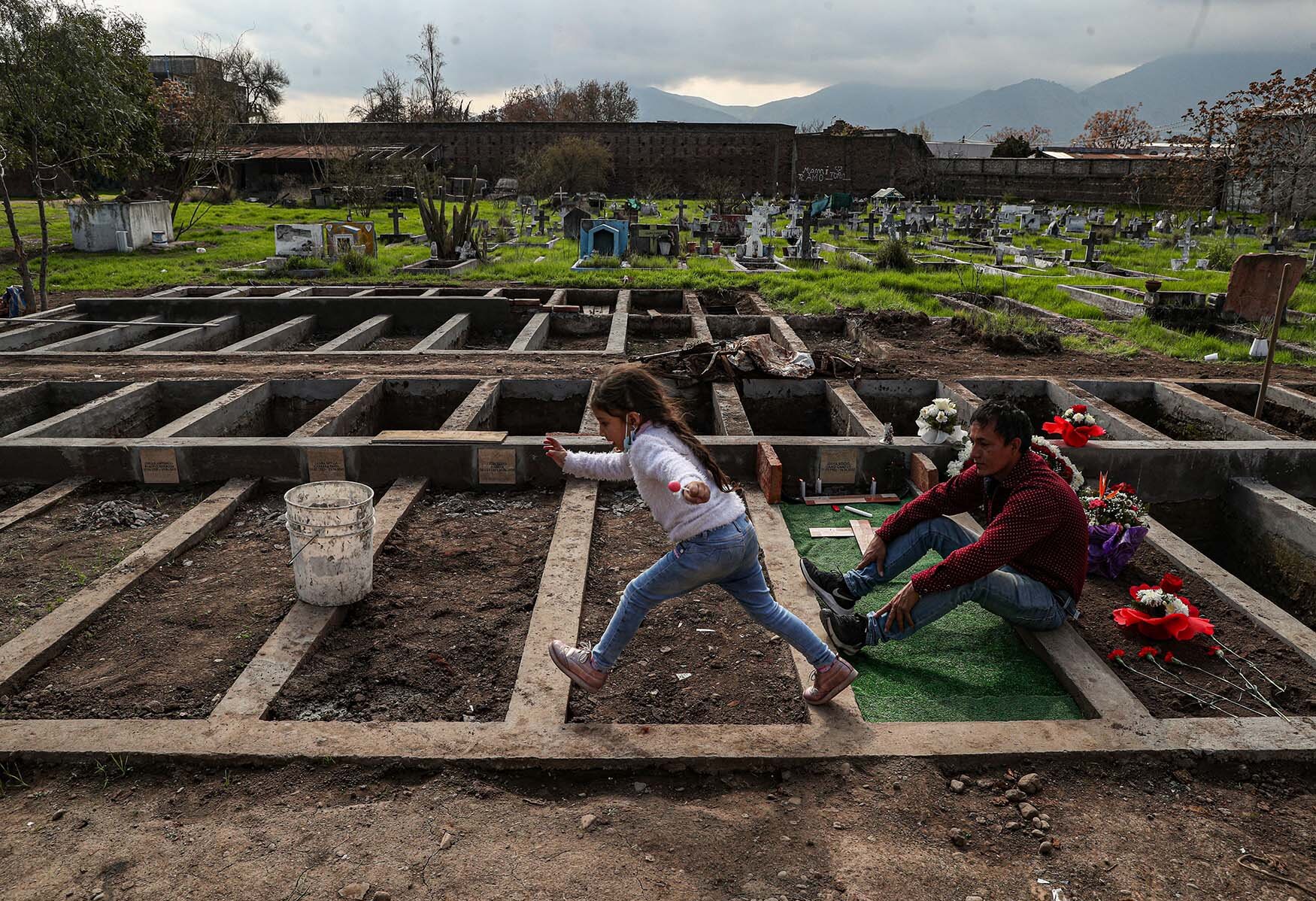Nicaraguans battle over symbols amid unrest

During almost two months of anti-government protests, symbols of President Daniel Ortega’s administration and even the earlier Sandinista revolution he helped lead have been defaced and destroyed or sometimes appropriated by demonstrators.
In this May 26, 2018 photo, the Spanish word for "Murderer" covers a mural of Nicaragua's President Daniel Ortega, as part of anti-government protests demanding his resignation in Managua, Nicaragua. (AP Photo/Esteban Felix)
Ortega and his wife, current Vice President Rosario Murillo, returned to power in 2007, and to many Nicaraguans it seemed their election campaign never stopped, even growing in size and intensity as they planted billboard portraits and other ostentatious works across the country.
These symbols have become targets for protesters during demonstrations that were initially set off in mid-April by a since-canceled austerity plan for the social security system but have expanded into demands for the Ortegas to give up power. Almost overnight, symbols of the Ortegas were painted with graffiti, burned, pulled down and stamped on by angry feet.
One of the main targets have been Murillo’s “Chayopalos,” or Trees of Life, that spouted up around Managua in 2013 _ huge steel sculptures of trees covered with hundreds of light bulbs lining the capital’s major thoroughfares. The administration portrayed the brightly colored Trees of Life a public art installation, but many people viewed them as a gaudy extravagance in a country rife with poverty.
Once the protests erupted, crowds chanted “Fall, fall, fall,” pulled the trees down and bounced on their twisted limbs for live videos. Recyclers quickly stripped their wiring, while others unscrewed light bulbs to be proudly dangled on cords around their necks.
In this May 20, 2018 photo, a pro-government billboard featuring Nicaragua's President Daniel Ortega and his wife first lady Rosario Murillo is destroyed by protesters, near a "Tree of Life" sculpture, a pet project of Murillo, in Managua, Nicaragua. (AP Photo/Esteban Felix)
Marisa Olivares Morales, a sociology professor at the Central American University of Nicaragua and a former long-time member of the Sandinista National Liberation Front, says the felled trees are an important symbol for protesters.
“Taking down Rosario Murillo’s first Tree of Life was a response from the kids to such a brutal aggression and the ‘Chayopalos’ ended up being a symbol of power,” she said. More than 160 people have been killed in street clashes since the protests started.
Protesters have also turned symbols of the revolution against the government.
When Ortega and others rose up against the Somoza family dictatorship in the late 1970s, the rebels were woefully outgunned and they used homemade mortars of welded pipe to fire on security forces. Now those same artisanal weapons are being turned on Ortega’s police and gangs of pro-government thugs.
Echoing another tactic of the revolution, whole segments of cobblestone streets have been pried up, especially in Masaya, southeast of the capital. The stones are stacked into waist-high barricades, just as the Sandinistas did to fend of Anastasio Somoza’s security forces, at times in the very same streets. The use of cobblestones was also symbolic during the revolution because they were made at a Somoza family factory.
Text from the AP news story, AP PHOTOS: Nicaraguans battle over symbols amid unrest, by Esteban Felix.
Photos by Esteban Felix



